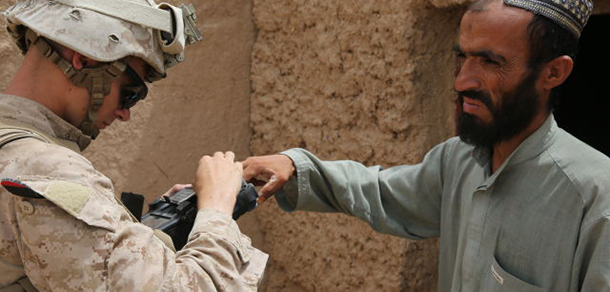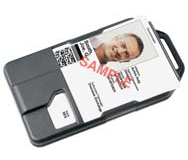Army biometric ID to see serious boost from new lab
27 April, 2018
category: Biometrics, Digital ID, Government
A new U.S. Army biometric ID lab could give a further boost to digital ID along with warfighting. The largest branch of the country’s military is seeking the same efficiencies that have sparked commercial and other government investments designed to harness the authentication powers of such inherent physical characteristics as fingerprints and iris scans.
We are going to use it in counter-terrorism to map high value targets. You’re also going to have a robust force protection for your rear area and your base scenarios.
The Biometric System Integration Laboratory opened in February at Fort Belvoir in northern Virginia. The lab serves as a “proving ground for emerging biometric devices and networking capabilities,” according to a report in C4isrnet.com.
“We see a huge expanding role for biometrics,” said Col. Donald Hurst, project manager for the Department of Defense’s biometrics for the Program Executive Office—Intelligence, Electronic Warfare & Sensors, according to the report. “We are going to use it in counter-terrorism to map high value targets. You’re also going to have a robust force protection for your rear area and your base scenarios.”
A military is nothing so much as a massive, if heavily-armed, bureaucracy, and expanded use of biometrics would enable the U.S. Army to get rid of bulky “hardware-based system of transport and storage for vast volumes of biometric data,” the report said. The idea is to move toward “virtual computing,” Hurst said.
That would boost the Army’s ability to scale biometric ID technology, saving time and improving flexibility—traits especially appealing for an organization designed to operate in combat and other rough situations.
Hurst was quoted as saying such a system could be operational by 2020 with delivery by 2024.
Better Army biometric ID could make the soldier’s life easier
So how exactly would the next generation of Army biometric ID technology operate? For starters, soldiers in the field could take census reports and otherwise use biometric data to identify insurgents and improve security, the report said. That soldier would access the Army’s biometric database via satellite communications, fiber optics or other pathways, making the ID process more efficient.
Better forms of data storage would reduce network congestion, too. In short, a new biometric system could prove less cumbersome than the current process, which generally involves “laptops, peripherals and servers,” the report said. Much better is technology that can fit into a soldier’s pocket.
But challenges remain. “Assuming a new device can connect to the needed network, the task will still require a vast amount of data in motion here, and planners are looking for new methodologies to ensure that data can flow as needed,” the report said.




